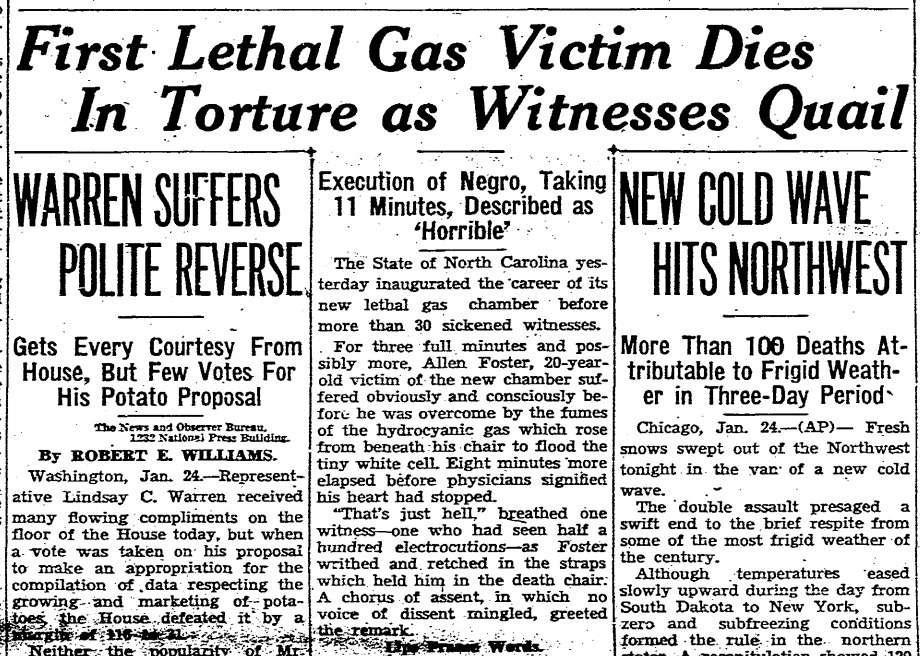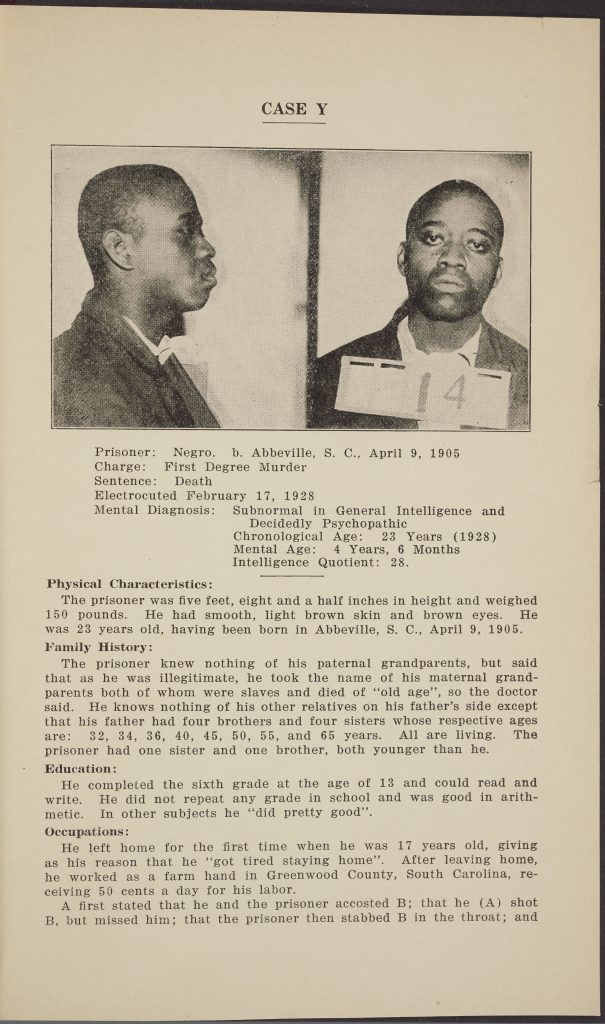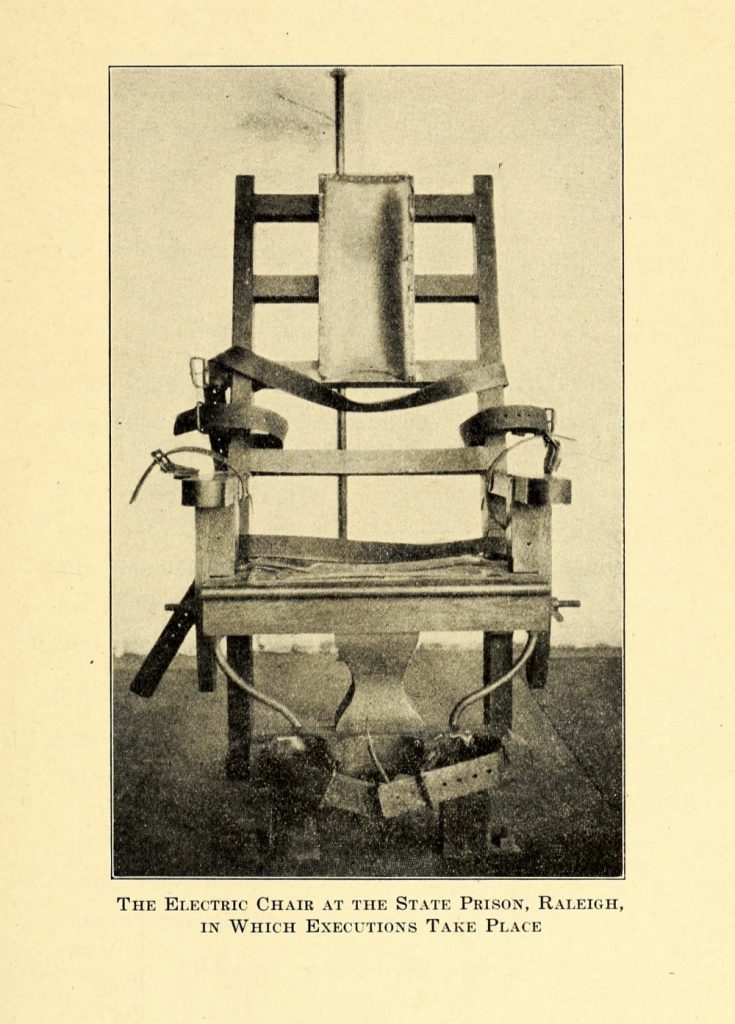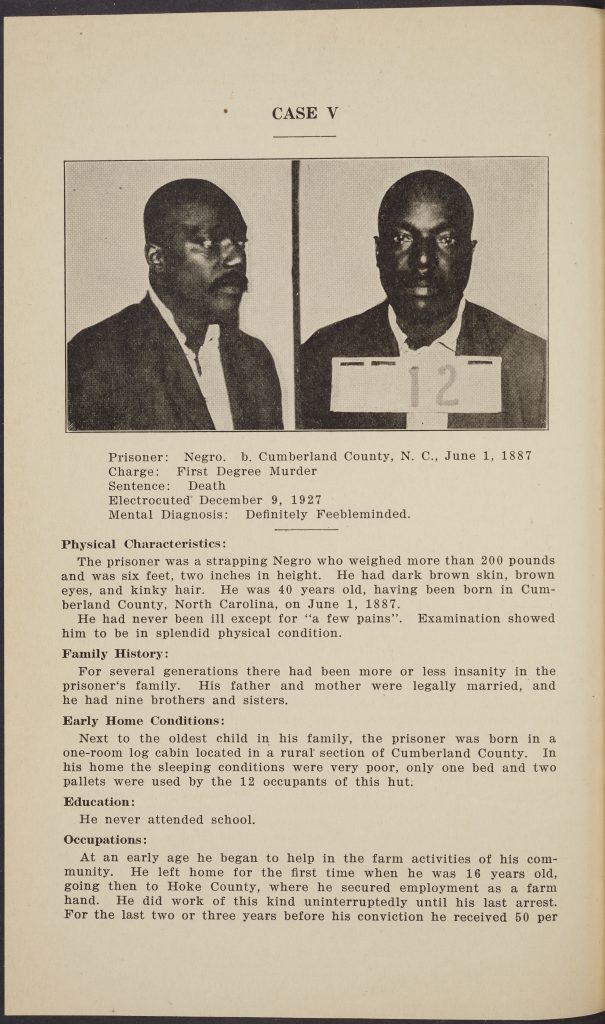In this Chapter
- Historical Overview
- Death Row Profile: Kenneth Rouse
- The Death Penalty is Lynching Dressed Up in the Clothes of Law and Order
- A Juror’s Childhood Memories: ‘They’d take him out and kill him’
- Growing Up with Racism: A Conversation with Andre Smith, Father of a Murdered Son
- Voices from Death Row Lay Bare a Legacy of Racism
As the 20th Century began, the spectacle of public hangings carried out by local sheriffs in public parks, and attended by crowds of picnicking spectators, became an embarrassment to Southern states. So, as North Carolina sought its place in a modernizing world, the state centralized and sanitized the death penalty.
The state took over executions for all 100 counties, and an electric chair was installed at Central Prison in Raleigh. In March 1910, Walter Morrison, a Black man convicted of rape in Robeson County, became the first to die by electrocution. At public hangings, African Americans had often come to protest and pray with the condemned person. Now, the audience was tightly controlled. Often, the only Black person present was the one being killed.
Between 1910 and 1961, the state executed 362 people behind Central Prison’s closed doors. Almost 80 percent of them were Black.
Death in the electric chair could be protracted and horrifying, and executions began to spark public outrage. In response, the state built the first gas chamber, a simple airtight enclosure around the electric chair. Asphyxiation by poison gas turned out to be no less grisly than electrocution, but it remained in use until the 1990s, when North Carolina settled on lethal injection as the sole method of execution.

In this period, the state also winnowed the crimes punishable by death to four: arson, burglary, rape, and murder. But this reform did not reflect a turning away from the death penalty. To the contrary, executions climbed.
Between 1910 and 1961, the state executed 362 people behind Central Prison’s closed doors. Almost 80 percent of them were Black. And African Americans made up 90 percent of those executed for burglary and rape, crimes perceived by whites to be the most racially transgressive.
The state’s attempts at modernization changed only the appearance of the death penalty. They did nothing to alter the racialized fear and anger that lay at the heart of capital punishment. Lynchings continued and some trials closely resembled them, with angry mobs attempting to kidnap the accused from jails and courtrooms, and juries returning death sentences after only minutes of deliberation.








